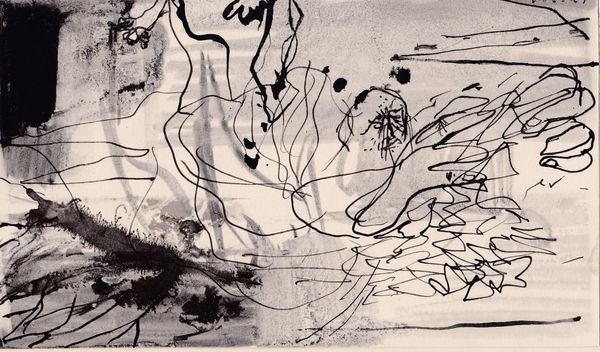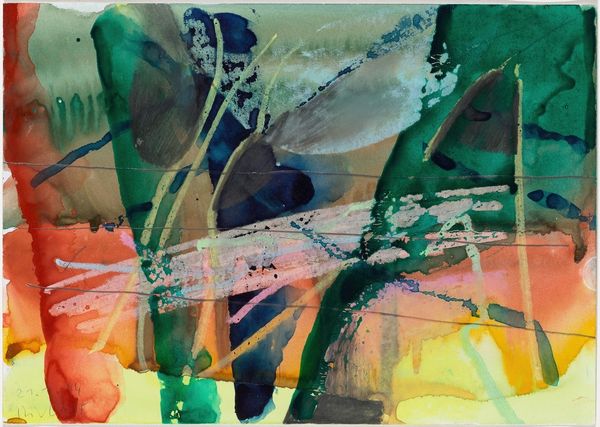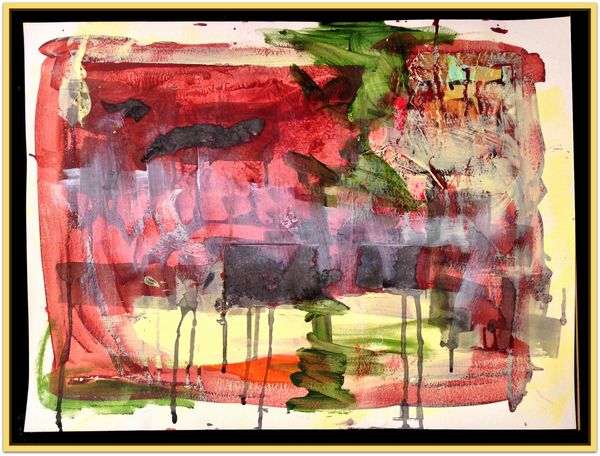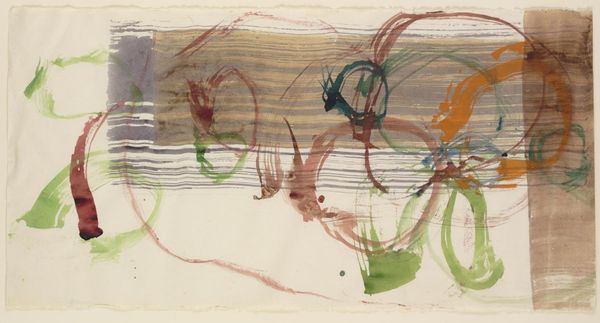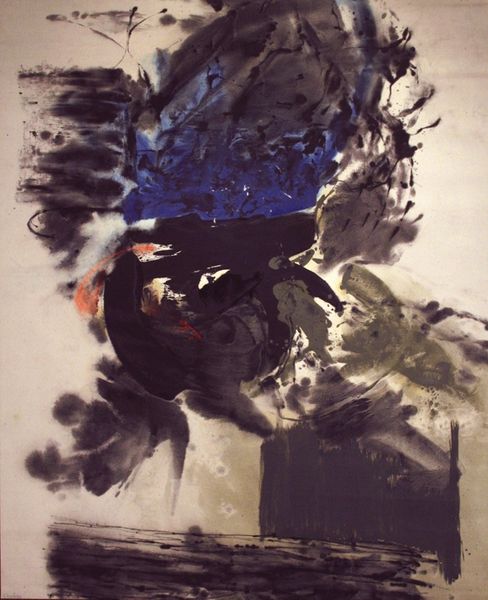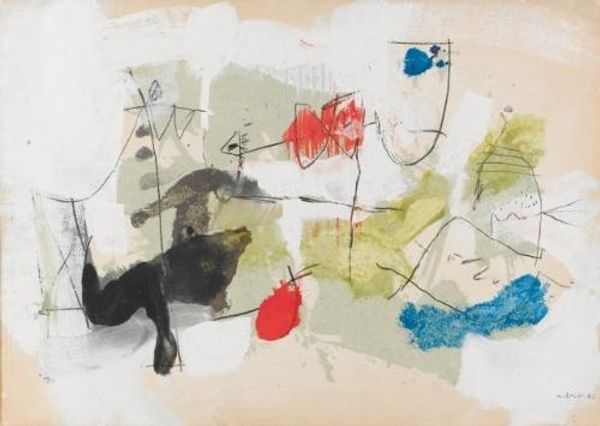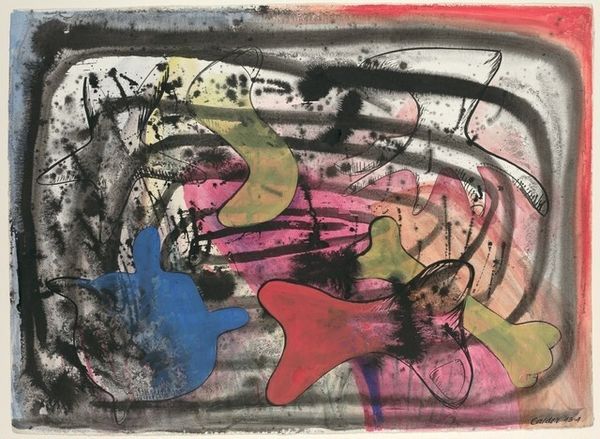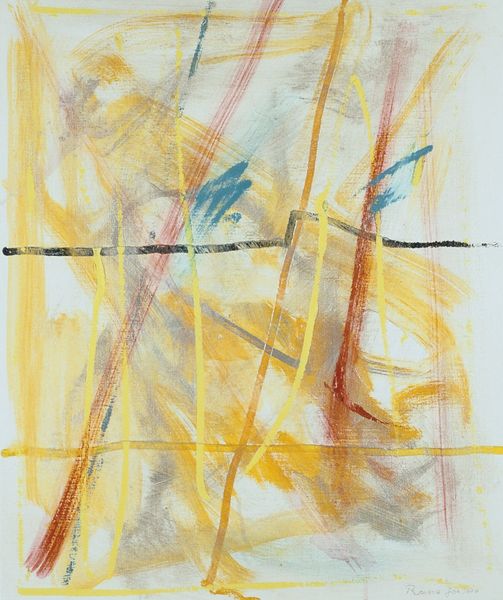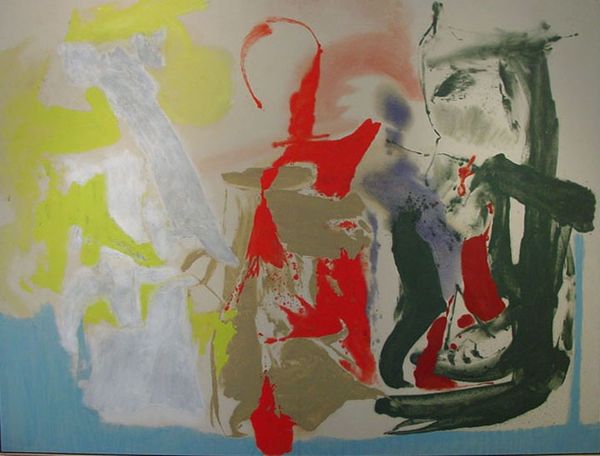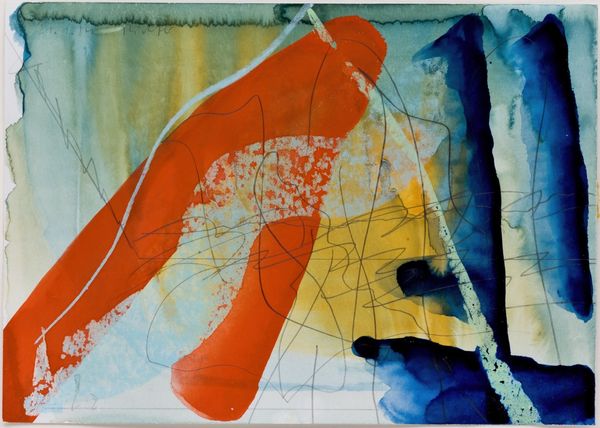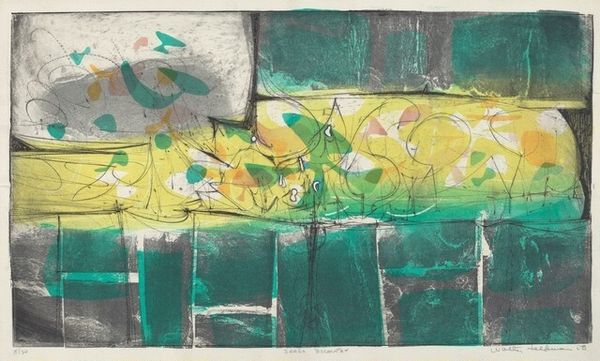
#
black-mountain-college
Copyright: John Cage,Fair Use
Curator: John Cage created "New River Watercolor, Series I, #5" in 1988. Editor: My immediate reaction is a feeling of quiet introspection, and a certain sense of underlying tension through the use of bold lines. The color palette, dominated by earth tones, amplifies that mood. Curator: It is fascinating to consider Cage's body of work during this period and how his performance art and social activism influenced this piece. While we cannot ignore its aesthetic qualities, it is crucial to consider his commitment to decentralization. Editor: I agree with your observation. Yet I'm compelled by the intentional ambiguity in its structure. Cage balances these opaque rectangular areas and open brushstrokes that create a push and pull across the work. Curator: Perhaps this also represents Cage's philosophical approach to destabilizing norms—offering, in material form, new configurations of how we perceive established concepts. In terms of the aesthetic, this aligns perfectly with how he disrupts traditional understandings of identity. Editor: An important element is certainly the balance of seemingly chaotic gestural brushstrokes with deliberate composition. Note the thin washes contrasting thicker applications of pigment. Semiotically, these suggest many layers of meaning, don't you think? Curator: Indeed. As an artist deeply engaged with process and chance, Cage sought to dissolve the figure-ground relationship and to allow each element—color, line, texture—equal significance. That aligns closely with many philosophical stances taken against hegemonic views. Editor: And his exploration of unconventional materials pushes these dialogues even further, revealing how the materiality embodies the idea, too. It’s a powerful interaction! Curator: Agreed. The tension of lines and colors reflecting back Cage’s own struggles with issues of freedom, constraints, and individuality. Editor: Absolutely, bringing it back to your points around sociopolitical ideas—it allows the artwork's formal and conceptual features to mutually elevate its communicative powers. Curator: Viewing the work this way expands our understanding and, ideally, empowers us. Editor: A thought-provoking piece, certainly, when we allow visual details to enrich contextual layers.
Comments
No comments
Be the first to comment and join the conversation on the ultimate creative platform.
